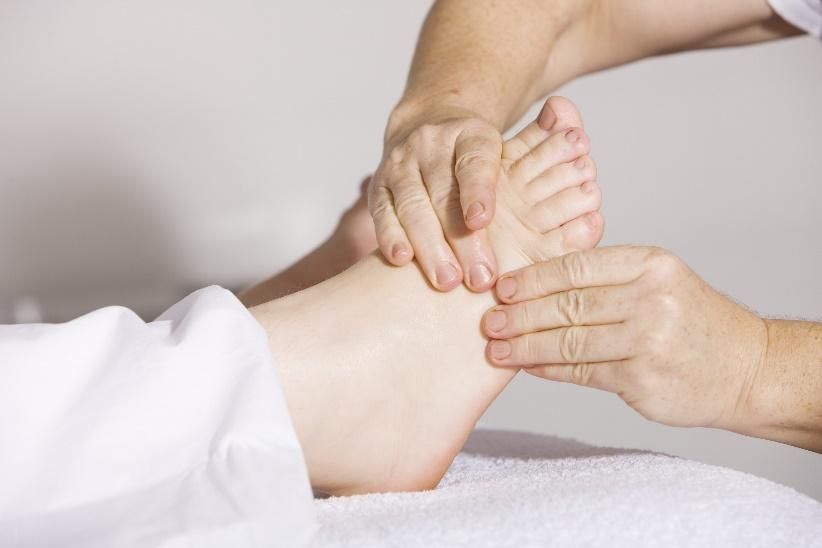Risk Factors, Symptoms, and Treatment Options for Bunions.

Author: Phil Ghuneim – Workers’ Compensation Coordinator/ Corporate Communication Manager
Another of the most common conditions which Dr. Svetlana Zats treats, is Hallux Valgus- or more commonly known as, Bunions. A Bunion refers to a deformity of the Metatarsophalangeal joint (MTP) that causes a visible protuberance to develop where the big toe meets the foot. This bump, in turn, forces the big toe to deviate inward toward the other toes. When the condition is on the side of the little toe, it’s referred to as Bunionette Deformity (or “Tailor’s Bunion”).
Risk Factors
The precise cause of bunions is generally ill-defined, however, some risk factors that are associated with the condition, include:
- Rheumatoid Arthritis - Any condition that causes pain and swelling in the joints, can lead to bunions.
- Wearing overly-tight shoes/ high-heel shoes- Tensions caused by cramped toes may produce swelling, which can gradually lead to the formation of a bunion.
- Heredity- Some people are just genetically predisposed to developing bunions, based on the shape of their feet.
Symptoms/Diagnosis
While Dr. Zats will always conduct a careful examination of the patient’s foot, she will probably be able to diagnose a bunion just based on the appearance and symptoms of the patient’s toe. When diagnosing bunions, Dr. Zats will typically look for pain and/or tenderness in the MTP joint, pain when walking, as well as stiffness and restricted motion of the big toe (or in the little toe for cases of “bunionettes”).
Additionally, Dr. Zats will look for redness of the bump and for any callouses or corns that may have formed. Although Dr. Zats will probably be able to identify the presence of a bunion just by looking at the patient’s foot, she will also order an X-ray to eliminate any doubt. An X-ray will clearly display the alignment of the patient’s toes and allow Dr. Zats to identify any deformity in the MTP joint.
Treatment
While treatment options may depend on the severity of the patient’s bunion, Dr. Zats will almost always default to implementing conservative treatment before considering surgery. Some conservative treatment options include, switching to shoes that give one’s toes more space, and using pads or custom orthotics that help to shield the bunion from further pressure and irritation. Other conservative treatment measures include, icing the bunion to help subdue swelling, as well as nonsteroidal anti-inflammatory medications such as Ibuprofen and Naproxen to help reduce pain and swelling.
Although these conservative treatment options have been proven to be effective, they only address the symptoms of bunions and not the actual joint deformity. With that being said, if discomfort persists despite conservative treatment, surgery may be necessary. Dr. Zats uses a minimally invasive approach with the latest techniques in surgical correction. Dr. Zats will be serving patients in the surrounding areas of our Palos Hills and Mokena locations starting June 4, 2018. To learn more about Dr. Zats, Click Here! To schedule an appointment with Dr. Zats, please call (708) 237-7200.

